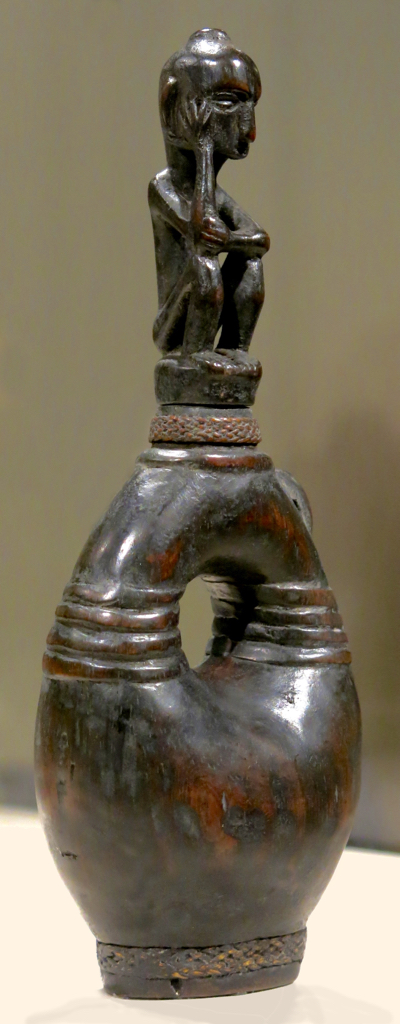Here’s a small figure, probably a deity, from the Ifugao people of the Philippines. This figure sits on top of a small container used for holding agriculatural lime (a misture consisting primarily of calcium carbonate), one of the constituents used in preparing a mild stimulant from betel leaf (Piper betle) and the nut of the areca palm (Areca catechu).

This figure, made sometime in the first half of the twentieth century, is probably an ancestor deity, or a guardian deity — akin, perhaps, to the household gods of Rome, minor deities which have retained a place in the collective memory of the Western tradition.
In the West, we tend to assume that a deity by definition is unitary (or unitary-but-triune), and transcendent. We forget that for much of human history, there were a multiplicity of deities that lived quite close at hand; and we forget that a significant percentage of humans today still live in a world where many deities live close at hand. And perhaps these close-at-hand deities have never really left our collective consciousness; today we keep our glowing smartphones always with us, just as the ancient Romans kept the statues of their Lares or household gods close at hand so that they might consult them constantly, to ensure good fortune.

I wonder about the Catholic tradition of a multitude of saints and guardian angels? Not called deities but serving some of the functions of the old household and locality gods.
BTW have you been to the small exhibits at the Stanford Archaeology Center? They are open during working hours and several are organized by students
https://suac.stanford.edu/work/events
https://suac.stanford.edu/